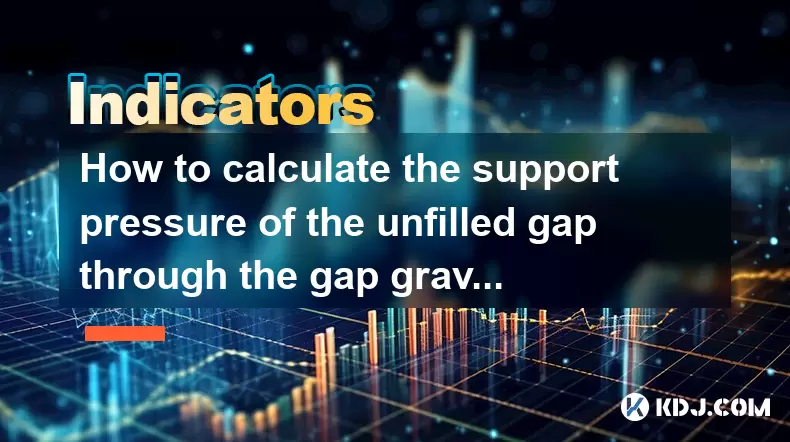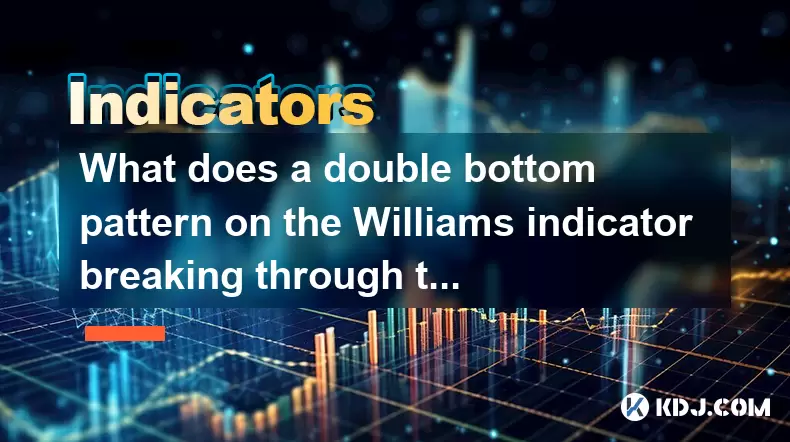-
 Bitcoin
Bitcoin $116400
-0.36% -
 Ethereum
Ethereum $4033
3.40% -
 XRP
XRP $3.302
-1.26% -
 Tether USDt
Tether USDt $1.000
-0.02% -
 BNB
BNB $796.1
1.67% -
 Solana
Solana $177.8
1.89% -
 USDC
USDC $0.9999
0.00% -
 Dogecoin
Dogecoin $0.2314
4.09% -
 TRON
TRON $0.3381
0.14% -
 Cardano
Cardano $0.7989
1.22% -
 Stellar
Stellar $0.4496
-1.84% -
 Chainlink
Chainlink $20.42
9.42% -
 Hyperliquid
Hyperliquid $41.17
0.88% -
 Sui
Sui $3.914
3.77% -
 Bitcoin Cash
Bitcoin Cash $584.7
1.52% -
 Hedera
Hedera $0.2632
-0.54% -
 Avalanche
Avalanche $24.09
3.40% -
 Ethena USDe
Ethena USDe $1.001
-0.02% -
 Litecoin
Litecoin $123.2
1.33% -
 Toncoin
Toncoin $3.318
-0.04% -
 UNUS SED LEO
UNUS SED LEO $8.984
-0.05% -
 Shiba Inu
Shiba Inu $0.00001323
2.85% -
 Uniswap
Uniswap $10.90
4.41% -
 Polkadot
Polkadot $3.999
3.34% -
 Dai
Dai $1.000
0.01% -
 Cronos
Cronos $0.1630
9.64% -
 Bitget Token
Bitget Token $4.484
0.82% -
 Monero
Monero $272.4
2.44% -
 Pepe
Pepe $0.00001173
6.03% -
 Aave
Aave $290.8
2.88%
How to calculate the support pressure of the unfilled gap through the gap gravity effect?
Unfilled gaps in crypto markets create support pressure; traders use gap size, volume, and technical indicators to calculate and anticipate price movements.
Jun 02, 2025 at 04:22 am

Understanding the concept of the unfilled gap and its support pressure is crucial for traders and investors in the cryptocurrency market. An unfilled gap occurs when the price of a cryptocurrency jumps from one level to another without trading occurring at the levels in between. This phenomenon can have significant implications on future price movements due to the gap gravity effect. The gap gravity effect suggests that prices tend to return to fill these gaps, creating a form of support or resistance pressure.
What is the Gap Gravity Effect?
The gap gravity effect is a technical analysis concept where an unfilled gap in the price chart exerts a 'pull' on the price, attracting it back to the level of the gap. This effect is based on the premise that market participants will eventually seek to fill these gaps, either by buying or selling at the levels where the gap occurred. Understanding this effect is essential for calculating the support pressure of an unfilled gap.
Identifying an Unfilled Gap
To calculate the support pressure of an unfilled gap, the first step is to identify the gap on the price chart. Here's how to do it:
- Choose the right timeframe: Gaps are more visible on longer timeframes such as daily, weekly, or monthly charts.
- Look for a price jump: Identify a point where the price moves significantly from one closing price to the next opening price without any trading in between.
- Confirm the gap is unfilled: Ensure that the price has not yet returned to the level of the gap.
Calculating the Support Pressure
Once the unfilled gap is identified, the next step is to calculate the support pressure it exerts on the price. This involves understanding the volume and the size of the gap:
- Volume analysis: Higher trading volumes at the time of the gap indicate stronger support or resistance levels. Look at the volume bars on your chart to gauge this.
- Gap size: Larger gaps typically exert more significant pressure. Measure the size of the gap in terms of percentage or absolute price difference.
To calculate the support pressure, you can use the following formula:
Support Pressure = (Gap Size x Volume at Gap) / Average Daily Volume
This formula gives you a quantitative measure of the support pressure, helping you understand how strong the pull towards filling the gap might be.
Using Technical Indicators
Technical indicators can also help in calculating and understanding the support pressure of an unfilled gap. Here are a few useful indicators:
- Moving Averages: Use moving averages to identify trends and potential support levels around the gap.
- Bollinger Bands: These can help identify volatility and potential reversal points near the gap.
- Relative Strength Index (RSI): This can indicate whether the market is overbought or oversold, which can influence the likelihood of the gap being filled.
Practical Example: Calculating Support Pressure
Let's walk through a practical example to illustrate how to calculate the support pressure of an unfilled gap:
- Identify the gap: Suppose Bitcoin (BTC) had a closing price of $40,000 and opened the next day at $42,000, creating a gap of $2,000.
- Volume at gap: The trading volume at the time of the gap was 50,000 BTC.
- Average daily volume: The average daily volume over the last 30 days was 30,000 BTC.
Using the formula:
Support Pressure = ($2,000 x 50,000 BTC) / 30,000 BTC = $3,333.33
This result indicates the level of support pressure the gap exerts on the price, suggesting that there is a significant force pulling the price back towards $40,000 to fill the gap.
Monitoring and Adjusting
After calculating the support pressure, it's important to continuously monitor the price action and adjust your analysis as needed. Here are some steps to follow:
- Watch for price reactions: Pay attention to how the price reacts as it approaches the gap level. Strong rejections or breakouts can provide additional insights into the strength of the support pressure.
- Update calculations: As new data comes in, such as changes in volume or gap size, recalculate the support pressure to keep your analysis up to date.
- Combine with other analyses: Use the support pressure calculation in conjunction with other technical and fundamental analyses to make more informed trading decisions.
FAQs
Q: How can the gap gravity effect influence trading strategies?
A: The gap gravity effect can be used to inform trading strategies by anticipating potential price movements towards filling the gap. Traders might set buy orders near the gap level, expecting the price to be pulled back to fill it, or use it as a signal for potential trend reversals.
Q: Are there any tools or software that can automatically calculate the support pressure of an unfilled gap?
A: While there are no specific tools dedicated solely to calculating the support pressure of unfilled gaps, many trading platforms and technical analysis software allow for custom indicators and scripts. Traders can use these to program their own calculations based on the formula provided.
Q: Can the gap gravity effect be observed in all cryptocurrencies, or is it more relevant to major ones like Bitcoin and Ethereum?
A: The gap gravity effect can be observed in all cryptocurrencies, but it is more pronounced and easier to identify in major cryptocurrencies like Bitcoin and Ethereum due to their higher liquidity and trading volumes. However, with careful analysis, it can also be applied to smaller altcoins.
Q: How does the time frame of the chart affect the analysis of unfilled gaps and their support pressure?
A: The time frame of the chart significantly affects the analysis of unfilled gaps. Longer time frames, such as weekly or monthly charts, tend to show more significant gaps and stronger support pressures due to larger price movements and higher volumes. Conversely, shorter time frames might show more frequent but less impactful gaps.
Disclaimer:info@kdj.com
The information provided is not trading advice. kdj.com does not assume any responsibility for any investments made based on the information provided in this article. Cryptocurrencies are highly volatile and it is highly recommended that you invest with caution after thorough research!
If you believe that the content used on this website infringes your copyright, please contact us immediately (info@kdj.com) and we will delete it promptly.
- Moat Stocks & Mega-Cap Momentum: July's Standout Performance
- 2025-08-09 12:30:12
- Injective (INJ) Eyes $15.39 Breakout Amidst Explosive Network Growth
- 2025-08-09 12:30:12
- HAT Token Mania: Price Surges, Crypto Auctions, and Meme Coin Mayhem
- 2025-08-09 11:10:11
- Undervalued Cryptos Primed for a 2025 Takeoff: MAGACOIN, TRX, and SUI Lead the Pack
- 2025-08-09 11:10:11
- Bitcoin Goes to Harvard: Ivy League Embraces Digital Assets
- 2025-08-09 10:50:12
- Bitcoin, BlockDAG, and Toncoin: Decoding the Crypto Buzz in NYC
- 2025-08-09 11:30:11
Related knowledge

What does it mean when the Triple Moving Average (TRIX) turns downward but the price doesn't fall?
Aug 09,2025 at 12:42pm
Understanding the Triple Moving Average (TRIX) IndicatorThe Triple Moving Average, commonly known as TRIX, is a momentum oscillator designed to filter...

What does it mean when the Williams' oscillator repeatedly hits bottoms but fails to rebound?
Aug 09,2025 at 09:28am
Understanding the Williams %R OscillatorThe Williams %R oscillator, developed by Larry Williams, is a momentum indicator used in technical analysis to...

What does a double bottom pattern on the Williams indicator breaking through the 50-day midline indicate?
Aug 09,2025 at 10:56am
Understanding the Williams %R IndicatorThe Williams %R indicator, developed by Larry Williams, is a momentum oscillator that measures overbought and o...

What does it mean when the MACD-histogram turns from green to red but the DIF line fails to form a golden cross?
Aug 09,2025 at 10:15am
Understanding the MACD and Its ComponentsThe MACD (Moving Average Convergence Divergence) is a widely used technical analysis tool in the cryptocurren...

When the J line in the KDJ indicator suddenly turns downward after being continuously overbought, does it indicate a top?
Aug 09,2025 at 06:35am
Understanding the KDJ Indicator and Its ComponentsThe KDJ indicator is a momentum oscillator widely used in cryptocurrency technical analysis to ident...

What does it mean when the TRIX indicator suddenly diverges downward after a long period of convergence?
Aug 09,2025 at 12:56am
Understanding the TRIX Indicator in Cryptocurrency TradingThe TRIX indicator, or Triple Exponential Average, is a momentum oscillator used in technica...

What does it mean when the Triple Moving Average (TRIX) turns downward but the price doesn't fall?
Aug 09,2025 at 12:42pm
Understanding the Triple Moving Average (TRIX) IndicatorThe Triple Moving Average, commonly known as TRIX, is a momentum oscillator designed to filter...

What does it mean when the Williams' oscillator repeatedly hits bottoms but fails to rebound?
Aug 09,2025 at 09:28am
Understanding the Williams %R OscillatorThe Williams %R oscillator, developed by Larry Williams, is a momentum indicator used in technical analysis to...

What does a double bottom pattern on the Williams indicator breaking through the 50-day midline indicate?
Aug 09,2025 at 10:56am
Understanding the Williams %R IndicatorThe Williams %R indicator, developed by Larry Williams, is a momentum oscillator that measures overbought and o...

What does it mean when the MACD-histogram turns from green to red but the DIF line fails to form a golden cross?
Aug 09,2025 at 10:15am
Understanding the MACD and Its ComponentsThe MACD (Moving Average Convergence Divergence) is a widely used technical analysis tool in the cryptocurren...

When the J line in the KDJ indicator suddenly turns downward after being continuously overbought, does it indicate a top?
Aug 09,2025 at 06:35am
Understanding the KDJ Indicator and Its ComponentsThe KDJ indicator is a momentum oscillator widely used in cryptocurrency technical analysis to ident...

What does it mean when the TRIX indicator suddenly diverges downward after a long period of convergence?
Aug 09,2025 at 12:56am
Understanding the TRIX Indicator in Cryptocurrency TradingThe TRIX indicator, or Triple Exponential Average, is a momentum oscillator used in technica...
See all articles

























































































